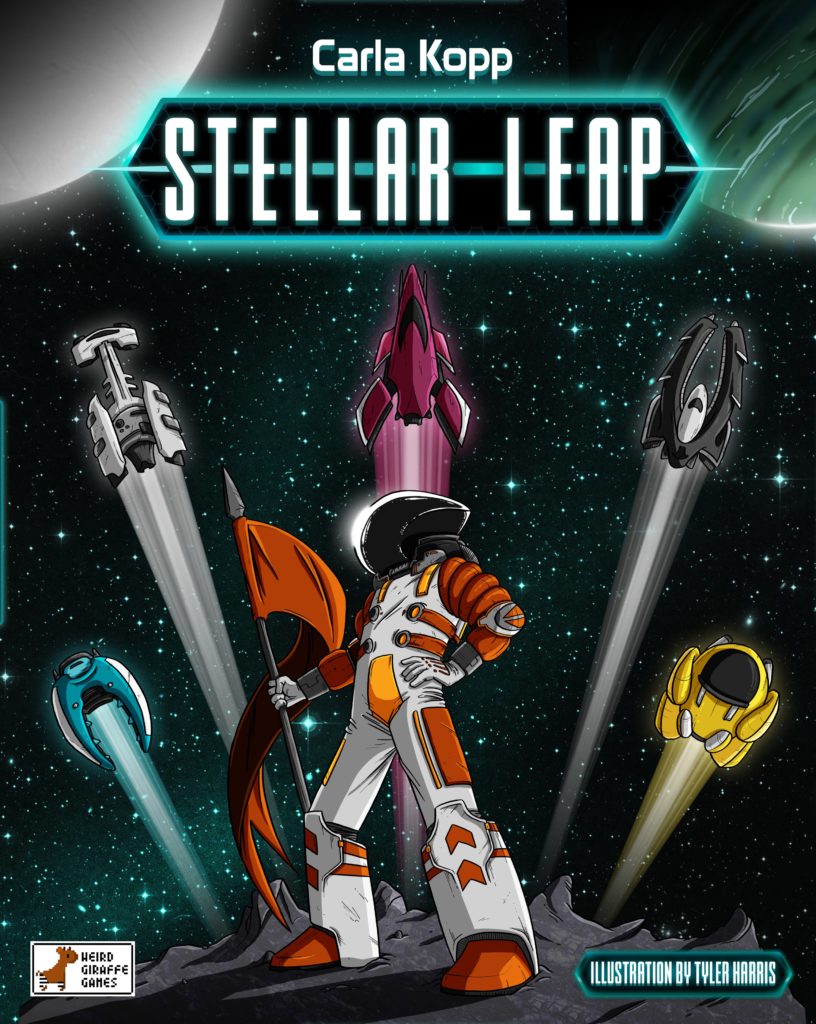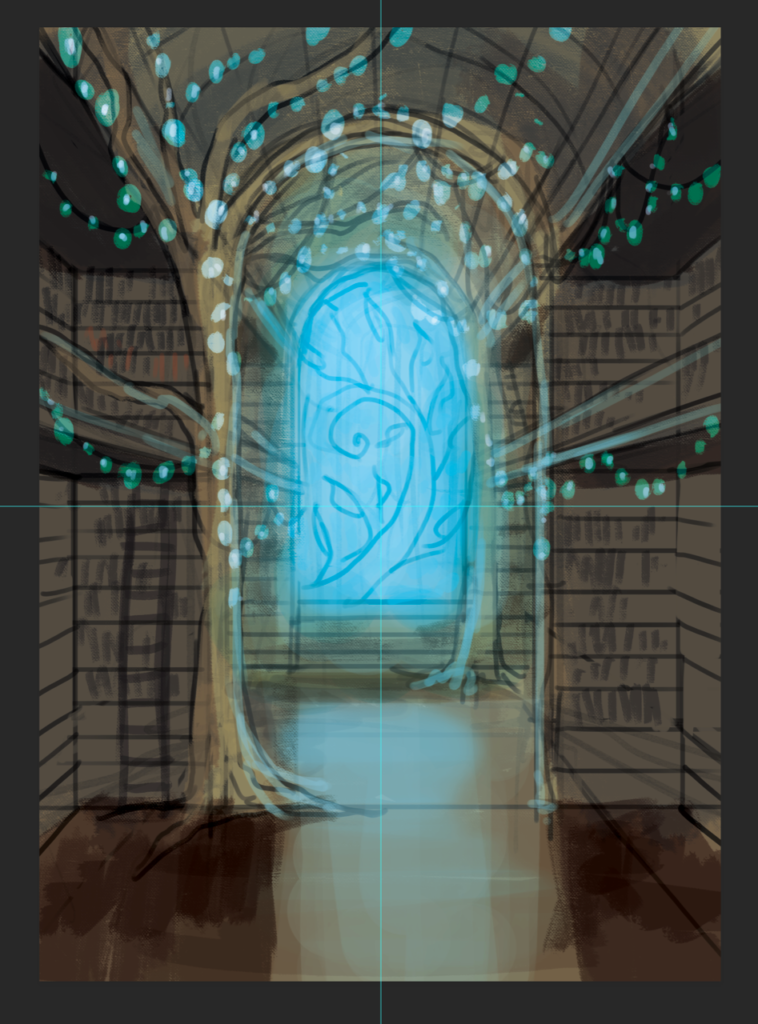Board game development is a very individual process. Every single developer has different methods for creating their games. This article is the ninth of a 19-part suite on board game design and development.
Looking for more resources to help you on your board game design journey?
Here you go: no email required!
Like this writing style?
Check out my latest blog on marketing here.
This suite is based on the Five Levels of Communication through Game Development, my own personal board game development philosophy. However, I’ve brought in Carla Kopp from Weird Giraffe Games so that you can get two viewpoints instead of just one.

With various other developers, I’ve talked about all the different parts that go into making a board game: the core engine, the mechanics, rules, and storytelling / internal narrative.
Except that’s not really all, is it? These elements will give you a game in a box, but they won’t make a game with social impact. Games are more than just what’s in the box. They are also the marketing used to promote them – the advertising and the footwork of the game developers who made them. They’re the Kickstarter campaign and the stores they’re kept in. They are the community that talks about them on forums and plays them at conventions. Games become everything that people claim that they are. I call this “external narrative.”
So how on earth do you bring all that together into a cohesive whole? There is only so much a game developer can do to influence player perception and much of it is not what you’d expect.
This question is why I’ve brought in Carla, who you might know from Super Hack Override & Stellar Leap, two tabletop games that have been successful on Kickstarter. Below is a lightly edited transcript of our conversation via Facebook Messenger.
This guide comes in four parts:
- Who is Carla?
- The Forgotten Parts of Game Development
- Finding an Audience
- Parting Advice
Who is Carla?
Brandon: Thank you very much for agreeing to help me out on this post! Tell me a little about yourself and your projects.
Carla: I’m Carla Kopp and I’m a software engineer during the day. During most other times, I’m working on my game publishing company, Weird Giraffe Games. So far, we have two published games, Super Hack Override and Stellar Leap.
Carla: Super Hack Override is a fast-paced filler game for 2-6 players that plays in 10-20 minutes. In the game, you’re a hacker trying to hack into enough facilities to gain the attention of the Supreme Super Hacker, all while avoiding Hacker Jail and making sure no one else can hack faster than you can.
Carla: Stellar Leap is a space exploration game for 1-5 players with worker placement, variable player powers, and a strategic twist on dice rolling in about an hour. The Galaxy is determined by the players who can also choose to trigger galaxy-wide events that can change how the game works for everyone.
Carla: I’ll be Kickstarting my next game, Fire in the Library, soon! It’s a press-your-luck game with variable turn order in which players must try their best to rescue books and accumulate knowledge. Everyone starts with tools to help mitigate their luck or change the probabilities for their opponents and can gain more as the game goes on.
Carla: I have a few other games in the works as well, Drapple and Observance. Drapple is an abstract, tile-laying gardening game. Observance is a game of stargazing, engine building, and time management. There are a few more, but those are the most far along.
Brandon: My copy of Stellar Leap is still being manufactured at the time we’re doing this interview, but I’m looking forward to it. My brother and I have had a lot of fun with Super Hack Override!
Brandon: Respect to you and Nick for being able to put these games together as fast as you have. That’s a lot of work!
The Forgotten Parts of Game Development
Brandon: Games are big projects. What goes into making them that a lot of people forget about?
Carla: There’s a ton of work, but one thing I spend a lot of time on is updating all the game data in a spreadsheet, updating nandeck files, printing out new cards, and cutting them. Every iteration of each game has to be created somehow and there are A LOT of iterations – usually a new one after each playtest, especially in the beginning. I sometimes use blank cards or write on prototypes if I need to iterate quickly, but that typically only happens at conventions.
Carla: There’s making the review prototypes themselves. Stellar Leap took more than two weeks to put together 11 prototypes. This meant separating colors of cubes, chits, and meeples, counting them, putting them all into individual small bags. Cards from the Game Crafter are also in a random order, so I had to separate all of those and put them into different bags. I decided to make my own player boards out of foamboard and artboard. That meant printing out the board images on paper, gluing them to boards, waiting for them to dry, and cutting them all out. There were 5 boards for each game – 55 boards – and cutting each one wasn’t exactly easy or fast. There were a few other pieces to add in, but it definitely wasn’t a fun few weeks.
Brandon: The manual sorting of pieces can be an especially big one if you’re not expecting it. That’s really easy to forget.
Carla: Granted, it’s not necessary to do that level of effort; the reviewers could separate the cards themselves and not everything needs to be in its own bag. I could have done simple card stock for the boards. I’m just a bit of a perfectionist and want to make a good impression.
Carla: There’s also just all the logistics of it all. Games aren’t made by one person usually and definitely not in my case. I work with at least one artist per game, if not an illustrator, graphics designer, and even an artist specifically for meeples! Then there’s playtesters, manufacturers (many at first, until you make a decision on which one to go with), reviewers (I try to go with at least 10), interviewers (written, podcasts, and video), and people to talk to to set up demos. There are just so many people and events to coordinate and it definitely doesn’t magically fall into place.
Brandon: There’s a lot of truth to this. It’s common to juggle a lot of technologies and demands on your time. Even though I “work alone“, I don’t really. I have a freelance artist, a community of game developers to bounce ideas off of, play-testers both online and offline, reviewers, bloggers, podcasters, etc. You get the idea. I have dozens of spreadsheets for different things – people to talk to, marketing leads, game files, play-testing logs, you name it.

Finding an Audience
Brandon: All this is behind the scenes. You have to think about what’s publicly visible, too. How do you find the right audience and spread the word?
Carla: Right now, my methods are really varied. I post frequently on all the progress I make on Twitter and occasionally Instagram. I make “work in progress” threads on Board Game Geek to talk about progress, then post to the appropriate Geek Lists during the Kickstarter. I’ll post in a large variety of Facebook groups while progress is being made on art and other aspects of the game and usually ask questions, while also linking my Facebook page. During the Kickstarter, there are about 20 different groups I post to, depending on the game.
Carla: Always post in relevant groups, but try to make the post engaging. Whenever I demo or playtest, I make sure to get the email address of the person, so I can inform them when the Kickstarter starts. I also run a game night at the local cupcake store and get emails from the people that attend that. There’s also Reddit and I tend to stick to my local subreddit, as the board game subreddits tend to not approve of posting about your own games. I also try to go to as many conventions as I can and playtest as much as possible.
Carla: I also do a lot of interviews! Between written, video, and podcasts, I did 17 interviews during my last Kickstarter. Not only that, there’s also certain board gaming websites that take press releases. I’ve tried a variety of advertising, as well, but I’m definitely going to get farther away from that as traditional advertising doesn’t seem to work as well as I’d hope. I’ve run a few contests as well, but I’m not sure any of those have helped all that much. Contests might be good for unknown publishers, but I’m not exactly unknown at this point.
Brandon: That’s a ton of really good information and I have, in response, a few reactions. The first being that no matter what location you go to – Board Game Geek, Facebook, Reddit, or cons – you’re going to really specific places to spread the word of your games. Not only do you make engaging content, but you post it to specific groups, specific lists, and specific subreddits. It’s targeting. It’s smart business, and because attention is limited and constantly being sucked away, it’s polite, too.
Brandon: As for finding out which places are the best, well, I haven’t found a better way than experimenting – online and offline. Once you found places that work and people who were receptive to what you had to say, you always got their email and give them a place to go. That helps build a community, or at the very least, keep you organized. That’s where podcasts, video, interviews – even this very one – come in. It’s all outreach!
Brandon: This is what networking looks like…it’s talking to a lot of people. Both to spread your ideas and to make them better.
Brandon: Think I just had a marketing geek moment there.
Carla: Reviews are also so important! I have a list of reviewers that are great to work with, but you can’t just choose the ones you like, you have to choose ones that will like your game and increase your audience.
Brandon: Yes, you definitely need to reach out to reviewers for trust and visibility to your intended audience. I try to aim for professional ones with a well-targeted audience, even if they might say something I don’t like.
Parting Advice
Brandon: If there were one piece of advice you could give yourself before you started making games, what would it be?
Carla: Be prepared for a lot of work, learning, and growing as a person. It’s going to be hard, but you’ll be better for it and gain a ton of friends. It’s not an industry where you’ll earn a lot of money, but it does have a lot of heart.
Brandon: Amen to that. It’s a fun process and you meet a ton of people.
Brandon: Alright, that’s all I’ve got. Thank you very much! Good luck on Fire in the Library, I’m looking forward to it 🙂
Carla: Thank you! I’m looking forward to seeing Highways & Byways, as well!
Board games are big projects, so a lot goes on behind the scenes. Experts can make it look easy, but it isn’t. How you handle manufacturing, logistics, and marketing can all affect how your games are perceived. Those perceptions, in turn, become a part of your game – even if you don’t intend for them to.
Got any war stories from your game projects? Tell us about them in the comments below 🙂




